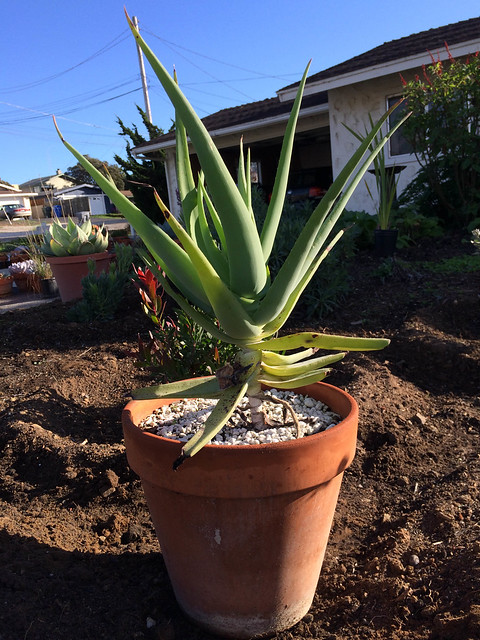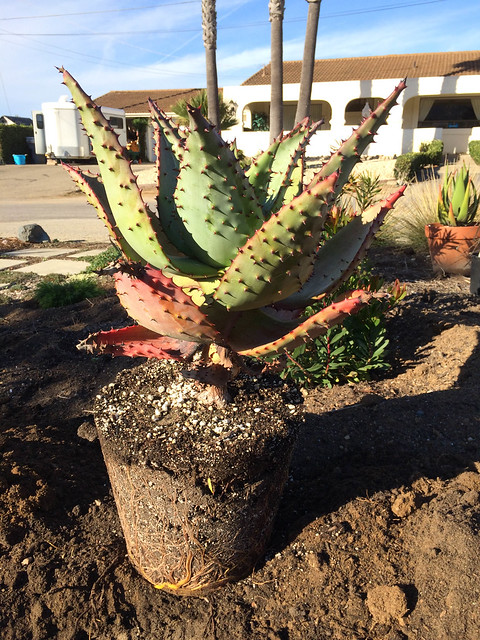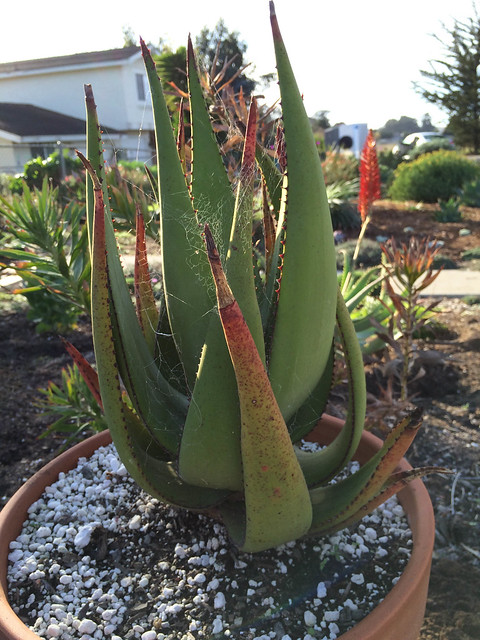I’ve been revamping much of my garden recently. If you have been following along the past three years you will remember the initial installation and the updates over the years. Because I didn’t really have the time to care for it I had pretty much left it to its own devices. This worked out pretty well and I ended up with a lovely garden of native and mediterranean climate annuals. This style of garden is great because it is basically free (after the initial purchase of plants the first year) and looks great while it is in bloom. The downside is that when it is not in bloom it looks pretty wretched and it is actually pretty high maintenance to care for it over the long term if you want it to look nice.
I wanted a bit of a change so I decided to create a Proteaceae and succulent garden. This type of garden is ideal for my warm, dry, coastal climate. It looks good year round, needs very little water once established (once a month should do the trick), and for the most part is low maintenance (though the succulents will need to be lifted and divided over time and the Proteaceae will probably need replacing now and then. They like to die).
We had almost a week of rainy weather and before the storms started I quickly planted out most of the Proteas. We had a break in the rain today and I planted out some of the larger Aloes.
I’ve been collecting Aloes and other large succulents the past few years but they grow surprisingly fast in containers and need pretty regular potting up. It was time to put them in the ground so they can look their best.
Aloe speciosa (tilt-head Aloe) arrived from Annie’s Annuals in March of 2013 in a tiny four inch pot. (top row, second from the left)
It has grown pretty dramatically the past year and a half and as of this morning resided in a ten inch terra cotta pot. Incidentally, I don’t recommend terra cotta for big Aloes. Very difficult to get them out without damaging them!
I bought Aloe marlothii from San Marcos Growers about two years ago in a one gallon pot. Now it is ready to be a dramatic specimen plant in the center of the border.
They both look pretty great planted out. They don’t really need the big watering wells. But since the shrubs, perennials, and grasses do I think it looks better if everything is uniform. It also helps me a bit in not planting things too close together since I have been designing this garden on the fly.
Aloe wickensii I have had for at least four years. Originally purchased in a four inch pot back when I lived in West Hollywood or maybe even Santa Monica.
The new gardens are starting to take shape but they are still a work in progress.

































